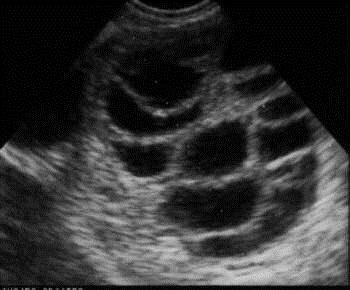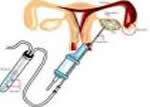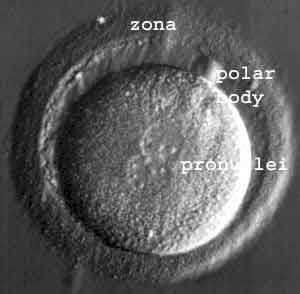Is the best way to help the cases with infertility to conceive ,is no different from natural conception only in that needs less where enough for its success one sperm, even if it is not mobile, which is injected in the egg of a wife.
We usually use ICSI when there is any of the following reasons:
- The absence of sperm and presence of sperm in testicular tissue(azospermia).
- Low sperm count or slow movement or the presence of abnormalities.
- Lack of proportion sperm containing part responsible for the fertilization of eggs.
- Tubular factor.
- Aging wife.
- Failed IVF previously.
- Infertility without a known cause.
IVF/ICSI steps are described fully below:
Stimulation of the ovaries to encourage development and maturation of the eggs

The woman is given fertility medications to stimulate her ovaries to produce many follicles. Follicles are the small fluid filled structures which develop on the ovaries, each of which will hopefully contain an egg. The number and size of the developing follicles is measured by trans-vaginal ultrasound scans. The exact number of follicles which develop varies between patients, but the average is about 10. The process of follicles development is monitored with scans and hormonal essays. The final preparation for egg retrieval involves a hormone injection which mimics the natural trigger for ovulation. Egg retrieval will take place 35-37 hours after this injection. At Ganin we understand that excellent quality eggs can only be produced if the initial assessment of the wife is carefully undertaken, coupled with ovulation stimulation protocol that is carefully selected and designed suiting the specifics of the wife medical status. That has to be followed by close supervision of the follicular development.
Retrieval of the Eggs

Egg retrieval is a minor theatre procedure which is carried under general anaesthesia. The trans-vaginal ultrasound probe is used to visualise the ovaries and a needle attached to the probe is passed through the vaginal wall into the follicles. The fluid within each follicle is aspirated and then examined in the IVF laboratory for the presence of an egg. After identification, the eggs are washed and transferred into special culture medium in special dishes in an incubator.
Fertilization of the eggs and culture of the embryos
While the egg retrieval is proceeding, the sperm is also prepared. A semen sample is provided by the husband and, in the laboratory, a concentrated preparation of the best motile sperm is extracted from the semen sample. This sperm preparation (containing approximately 150,000 sperm) is added to the dishes containing the eggs, and they are incubated together overnight.Another form of insemination is called ICSI, which involves injecting a single sperm into each egg using a very fine needle, rather than mixing the eggs and sperm in a dish Irrespective of the method of insemination used, on the morning after egg retrieval, the eggs are examined to see which have fertilized, which would looks like the picture.

Fertilized eggs (zygotes) are then routinely cultured in the IVF laboratory until day 3, at which time the best 1-3 embryos are selected and transferred back into the woman uterus. For some patients, a blastocyst cycle may have been recommended in which case embryo culture is extended to day 5 or day 6.
Embryo Transfer
Embryo transfer is a simple theatre procedure that does not routinely require anesthesia. The embryos are placed into the uterine cavity by means of a fine catheter inserted through the cervix. The correct positioning of the embryos is confirmed by abdominal ultrasound, so the woman is required to have a full bladder for the procedure.
Best Doctors
Ut wisi enim ad minim veniam, quis nostrud exerci tation ullamcorper suscipit lobortis nisl ut aliquip ex ea commodo consequat. Duis autem vel eum iriure dolor in hendrerit in vulputate velit esse molestie conse
quat, vel illum dolore eu feugiat nulla facilisis at vero eros et accumsan et iusto odio.

Dr. Andrew Cruize, MD

Dr. Anne William, MD
Opening Hours

